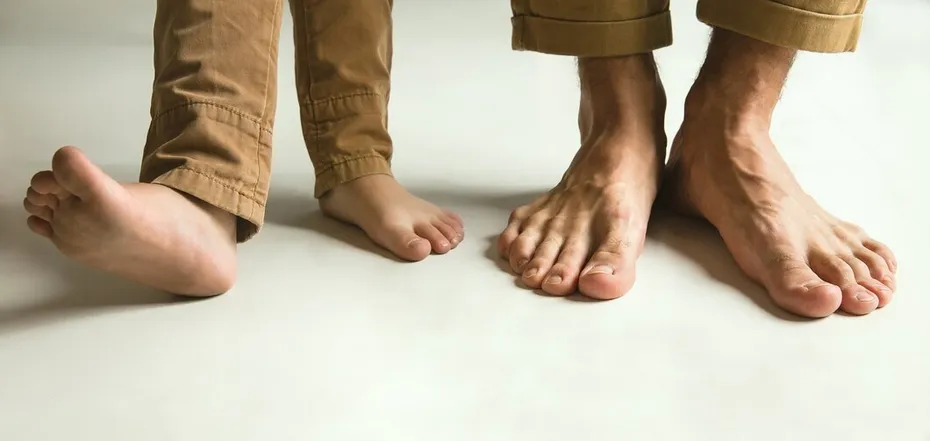
Scientists explain why some people have different-sized feet
Many may think that the right and left sides of the human body are or have to be symmetrical. However, this is not the case with feet, which often come in two different sizes.
The Center for Foot Care in Liberty, Ohio, said that about 80% of the US population has a larger left foot than the right one. Researchers at City Chiropody and Podiatry in London agreed, explaining the difference by saying that the majority of the world’s population is right-handed, which means the left foot trains more and gets a little bigger to maintain body balance, LiveScience writes.
“Nobody’s feet are exactly the same. Our bodies are somewhat symmetrical, but not always symmetrical,” said podiatrist Corrine Renne.
A study conducted back in 1983 involving 4,000 women and 2,800 men from the United States found that none of them had a pair of feet that were exactly the same size and shape.
A 2018 study by SATRA Bulletin, a specialized shoe and leather publication, confirmed these findings. After analyzing 2,890 people in the UK, the researchers found that 19% of people can have feet that are more than 4 millimeters long.
“A similar trend is seen in the USA, and in China no less than 24 percent of people have a difference greater than 4 millimeters,” the 2018 study said.
Which foot is usually bigger: right or left
There is no consensus on whether the left or right foot is usually the larger of the pair. However, most researchers are inclined to believe that people tend to have a larger left foot. After all, the majority of the world’s population is right-handed, so the left foot is trained more and becomes more massive to maintain body balance.
A 1983 study noted that although it is commonly believed that the left foot is usually larger than the right, scientists have found that the probability of a person having a larger foot on the left or right is actually the same. So a 2018 study showed, on the contrary, that 50.7% of British women and 54.8% of British men have a longer right foot than the right one.
Why your feet are different-sized
There are also other factors that can lead to differences in foot size, scientists state. “For instance, women can experience a bit of discrepancy in foot size during or after pregnancy,” said Corrine.
Experts also note that a number of birth conditions can lead to the fact that the size of one foot is significantly different from the other. “If you’re born with a club foot, that whole extremity is smaller than the opposite side,” said Jacob Wynes, associate professor and chief of orthopedic services at the University of Maryland School of Medicine.
Brachymetatarsia and brachymetapody are conditions in which one or more toes are shorter, respectively, Wynes noted. For example, in a condition known as digital hypoplasia, toes may be underdeveloped or incomplete.
According to the Center for Foot Care, injuries can also change the size of the foot, especially in childhood when the bones are still developing. Wearing a plaster cast on the foot for a long time can also lead to weakening and contraction of the muscles, add the experts from City Chiropody and Podiatry.
Renne added that the difference in foot size can be the result of more frequent use of one foot than the other, such as in a ballet dancer – this can increase muscle mass and thicken the structure of the foot.
Is treatment necessary?
According to doctors, if the difference in foot or limb length is severe enough, surgery may be necessary. Surgeries such as bone grafts or bone cuts can lengthen or shorten the bone. “People can usually tolerate about 2 centimeters [0.8 inches] of change” from surgery,” said Jacob.
However, in most cases, different-sized feet are just a minor inconvenience and do not require any surgical interventions, experts say.


Comments (0)